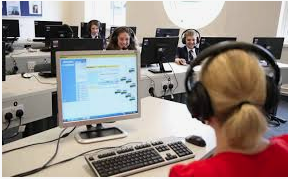Through originated in the USA, Language laboratory rapidly gained ground in UK in the 1960’s. Now it forms an important technique of teaching in several countries and especially in the teaching of foreign language.

Introduction to language labs
Modern language labs are known by many names, digital language lab, foreign language lab, English language lab, multimedia language lab, language media center, and multimedia learning center to name but a few. These various names usually refer to the same concept of using a dedicated language teaching system to teach new languages.
Language labs are becoming highly valued because they offer students a structured eLearning environment that is successful and reliable.
Advantages of a language lab
Language labs provide practice in an entertaining and interactive way to acquire the 4 main language skills: listening, speaking, reading, and writing. Students learn more comprehensively through a language lab,
Language labs provide practice in an entertaining and interactive way to acquire the 4 main language skills: listening, speaking, reading, and writing. Students learn more comprehensively through a language lab.
#1 A language lab is practical: learning a new language just by studying the theory is not enough to guarantee a successful language learning experience. Language labs provide practice in an entertaining and interactive way to acquire the 4 main language skills: listening, speaking,reading, and writing.
#2 Students learn much faster in the language lab.- Practice leads to language learning success! The language lab boosts the motivation of students achieving higher levels of language retention and progress.

#3 The teacher takes on a more important role in the language lab.- The language lab debunks this myth because it provides supplementary materials that only facilitate the role of the instructor rather than compete with it. The teacher can then focus on the important parts of the course rather than waste time explaining everything.
#4 Use more resources and varied activities than in a traditional classroom.- Language labs allow students to practice the language with a much wider variety of activities and exercises based on the computer.
#5 Language labs allow for diversity in the classroom.- Language labs are tailored to the individual needs of students. On the other hand, thanks to monitoring and evaluation in real time, the teacher knows exactly what course objectives pose major difficulties for the student time and can reinforce the class accordingly.
Conclusion
The language laboratory is a very helpful tool for practicing and assessing one’s speech in any language. It provides a facility which allows the student to listen to model pronunciation, repeat and record the same, listen to their performance and compare with the model, and do selfassessment. At the same time, it is possible for teachers to provide assistance individually and collectively. The language laboratory allows every participant his or her privacy to speak and listen.

